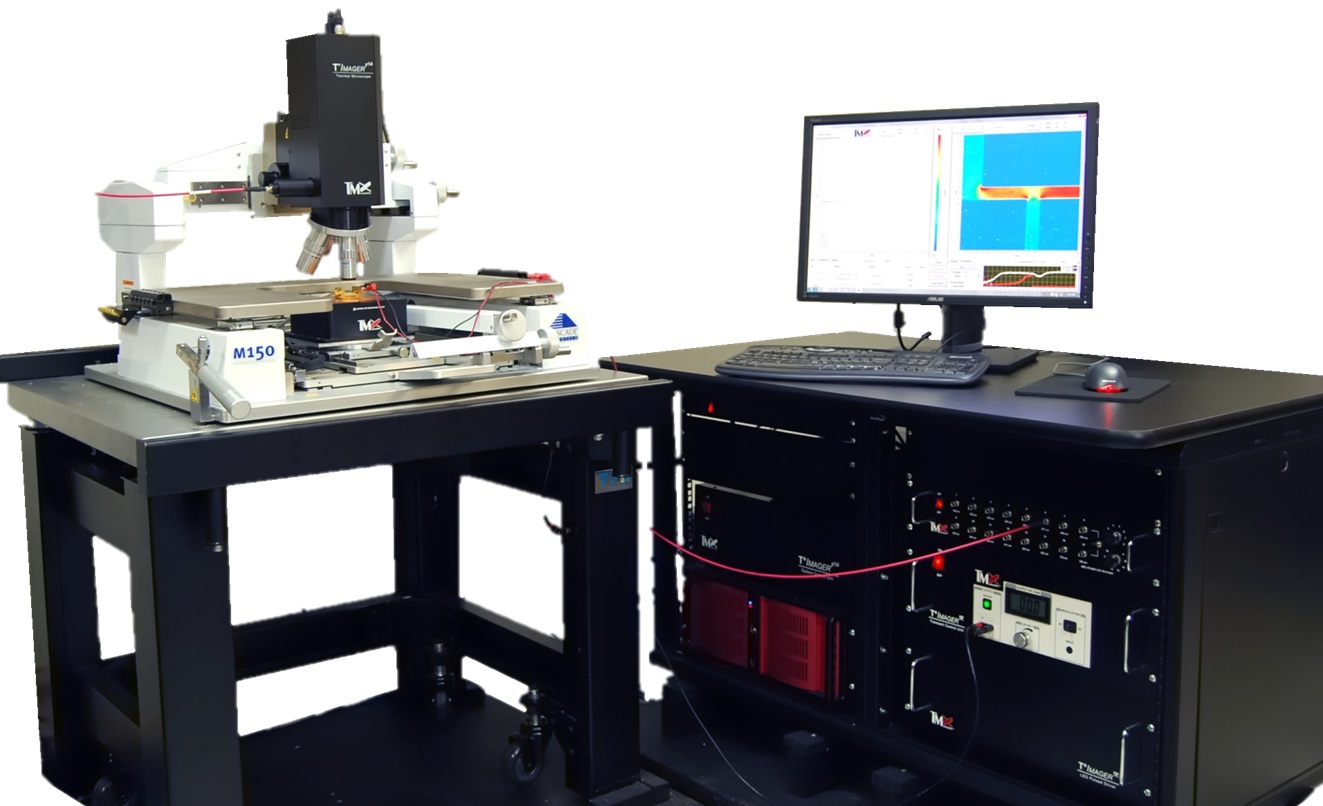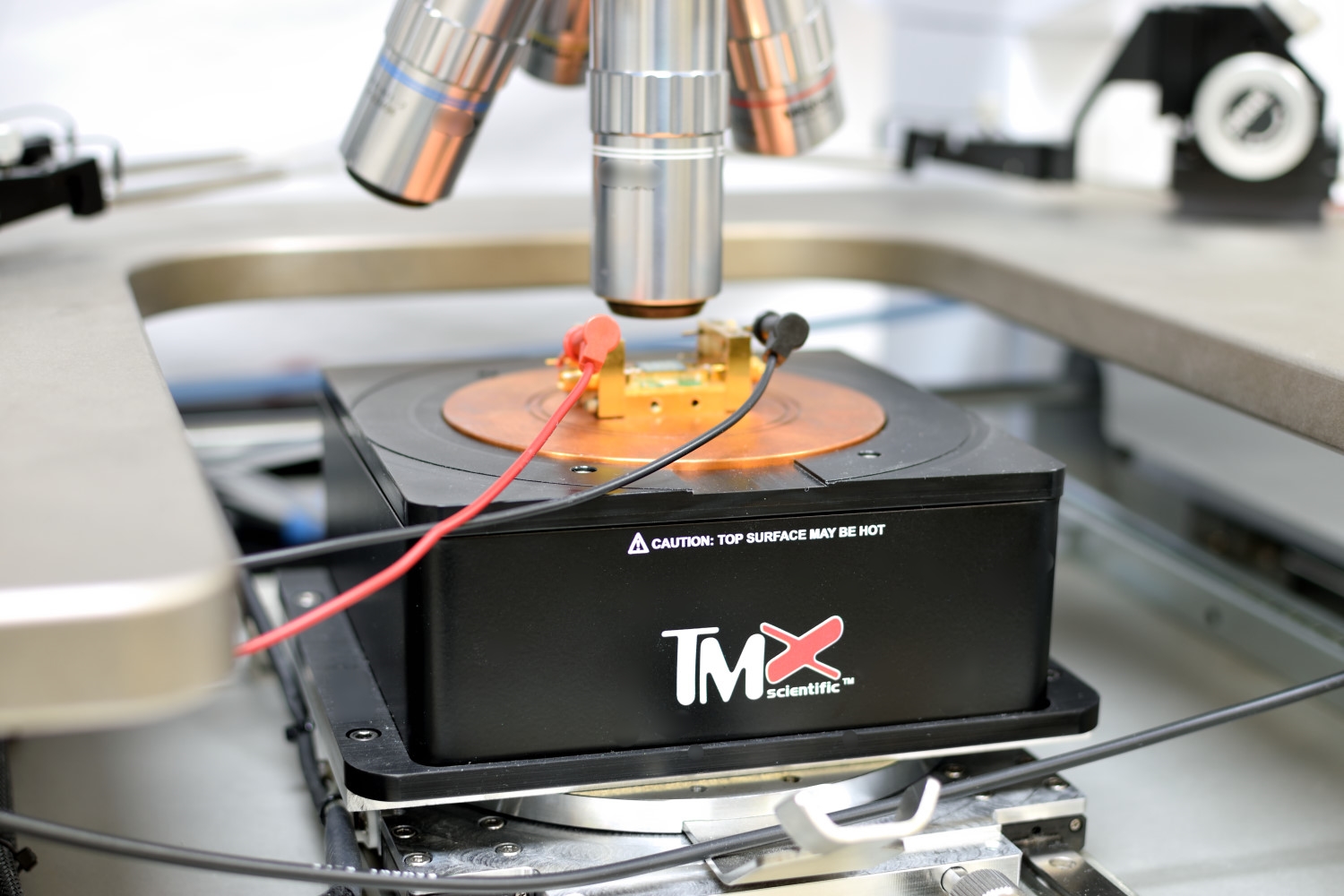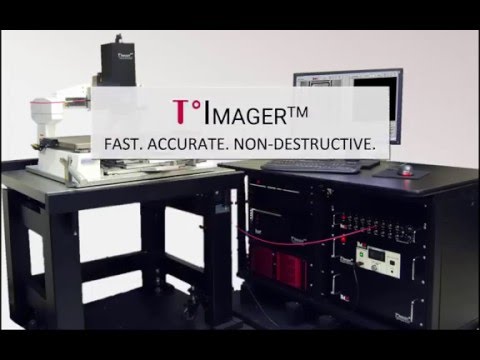T °Imager
The
The
The baseline
Most of the
Explore
Gallery | Data Analysis | Benefits | Applications |
T °Imager® Models
T °Imager® P14
Quiet, compact design for non-invasive, deep-submicron temperature mapping using selectable visible light.
Gallery





Data Analysis
The
TMX Scientific also offers
Benefits
- Large thermal image size: up to
1000×1000 pixels - Superior spatial resolution: up to
0.2 µm (7.8E-6 in.) - Speed: full, submicron thermal image in seconds
- Temperature accuracy: Better than 3% of measured temperature change
- Turn-key operation
- No surface treatment or painting required
- Measure materials that are transparent to infrared
- Non-contact, fully optical approach
- Great flexibility: adjustable triggering for device activation
- Transient capability (with Transient Package)
- Novel pixel-by-pixel calibration (with
T°Pixel™ and Calibration Package) - Nanoscale dynamic alignment (with
T°Pixel™ or Calibration Package)
Applications
- Measure the surface temperature fields of active electronic and optoelectronic devices, MEMS
- Measure the surface temperature fields of any type of externally modulated and controllable heated microscale structures
- Validate thermal design of microelectronic devices and ICs
- Perform quality control based on thermal imaging
- Locate hot spots and measure amplitude at device level
- Diagnose defects that generate hot spots
- Measure electroluminescence emission
